Understanding ABA Therapy and Its Impact
Applied Behavior Analysis (ABA) therapy stands at the forefront of interventions designed to aid children with autism spectrum disorder (ASD). Grounded in scientific principles of behavior and learning theory, ABA offers a personalized, evidence-based approach to foster essential skills and enhance quality of life. This article explores the mechanisms, goals, effectiveness, and nuances of ABA therapy in supporting child behavioral development, illuminating how it is reshaping lives through structured support and compassion.
What Is ABA Therapy and How Does It Support Children with Autism?
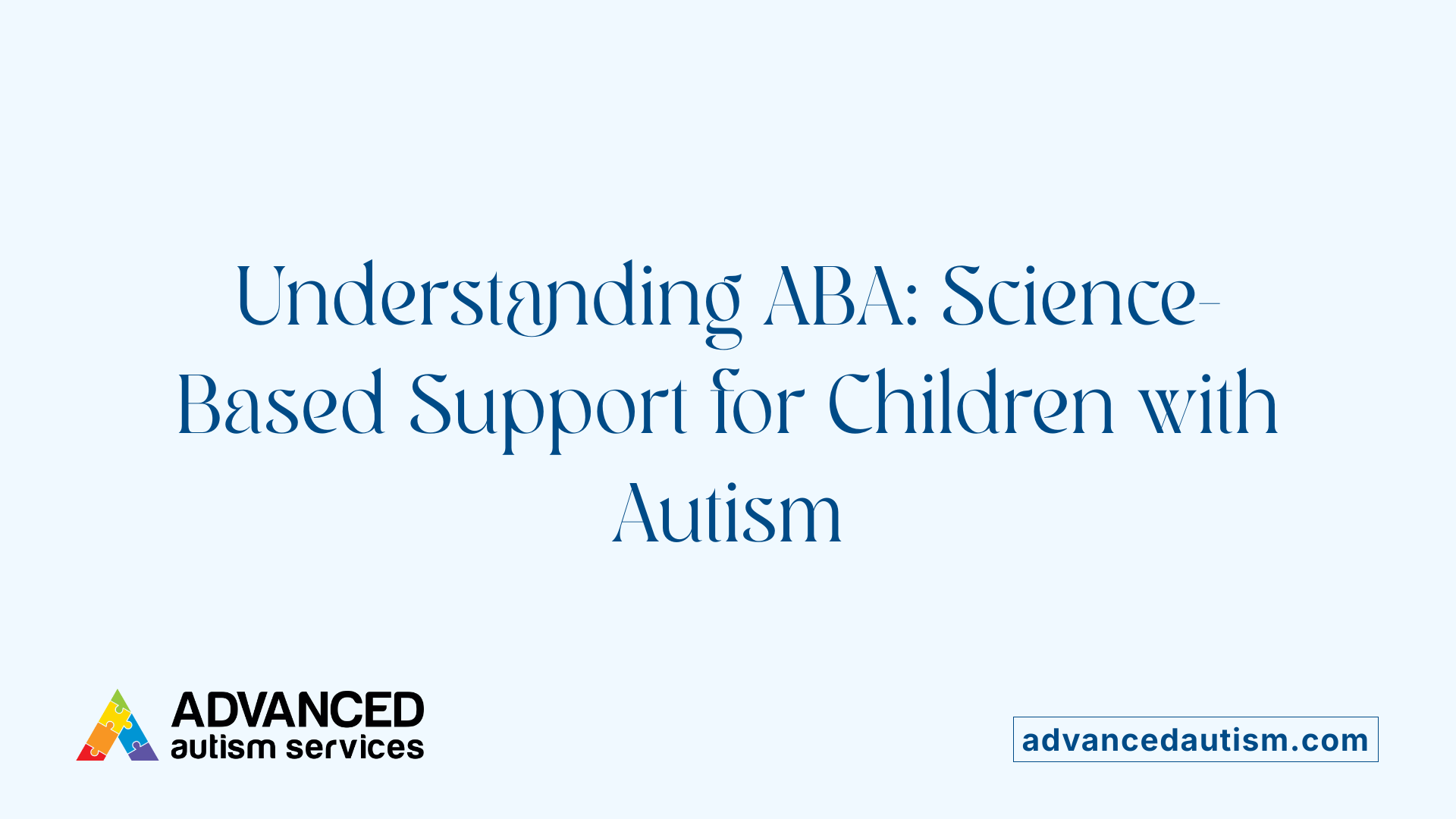
Definition of ABA Therapy
Applied Behavior Analysis (ABA) therapy is a science-based approach designed to improve behaviors and skills in individuals with autism spectrum disorder (ASD). It applies principles of learning and behavior modification to understand how behaviors work and how they can be influenced by the environment.
Core Principles of Behavior Analysis
ABA focuses on the 'A-B-Cs' of behavior: Antecedents (what happens before a behavior), Behavior itself, and Consequences (what happens after). By analyzing these elements, therapists can teach new skills and reduce harmful behaviors effectively.
How ABA Supports Skill Acquisition and Behavioral Improvements
ABA breaks down complex skills into small, manageable steps, promoting learning through consistent practice and reinforcement. Techniques such as Discrete Trial Training (DTT) and Pivotal Response Treatment (PRT) help children develop communication, social, academic, and daily living skills.
Role of Positive Reinforcement and Environment
Positive reinforcement—providing a valued reward following a desired behavior—is central to ABA, encouraging repetition and skill mastery. Therapy also involves manipulating environmental factors to support behavioral change naturally and enjoyably.
Personalization and Goal-Orientation in Therapy
Each ABA program is individualized based on comprehensive assessments of the child's skills, preferences, and needs. Qualified behavior analysts (BCBAs) develop specific, measurable goals aimed at enhancing communication, socialization, independence, and quality of life.
Settings for ABA Delivery
ABA therapy can be delivered in diverse settings including homes, schools, and community environments, ensuring skills generalize across everyday situations.
Involvement of Trained Professionals
Licensed BCBAs oversee treatment plans and supervise trained therapists, ensuring programs are evidence-based and progress is consistently monitored through ongoing data collection.
Overall Aims of Independence and Quality of Life
Ultimately, ABA aims to empower children with autism to participate actively in their communities, increase independence in daily activities, and experience an improved quality of life with personalized, supportive learning experiences.
Foundations of ABA: The Science Behind Behavior Analysis
What are the behavior principles such as operant conditioning in ABA?
Applied Behavior Analysis (ABA) is grounded in operant conditioning, a learning theory that explains how behaviors are influenced by their consequences. This principle states that behaviors followed by positive outcomes are more likely to be repeated, while those followed by negative outcomes may decrease. ABA uses this understanding to shape and modify behavior effectively.
What are the A-B-Cs of behavior?
A core framework in ABA is the analysis of three components: Antecedent, Behavior, and Consequence, often called the 'A-B-Cs' of behavior. The antecedent is what happens right before a behavior occurs, the behavior is the action or response itself, and the consequence is what happens immediately after. Understanding these elements helps therapists control environmental factors to encourage desired behaviors and reduce harmful ones.
How does ABA use positive reinforcement strategies?
Positive reinforcement is a cornerstone of ABA. It involves providing a valued reward immediately after a desired behavior, increasing the likelihood that the behavior will happen again. For example, a child may receive praise, a toy, or a preferred activity as a reward, which motivates repetition and learning of the new skill.
What environmental factors shape behavior in ABA?
ABA emphasizes that the environment strongly influences behavior. Therapists modify the surroundings to create conditions favorable for learning. This may include adjusting stimuli, organizing the setting to minimize distractions, or offering choices that engage the individual’s interests. By manipulating antecedents and consequences within the environment, ABA encourages positive behavior change.
What behavior modification techniques are used in ABA?
ABA incorporates several techniques to modify behavior, including breaking complex skills into smaller steps and using data-driven methods to track progress. Therapists use individualized plans tailored to each person’s needs, utilizing strategies like discrete trial training, naturalistic teaching, and reinforcement schedules. All interventions are continually evaluated and adjusted by certified behavior analysts to ensure effectiveness.
Tailoring Therapy: Individualized ABA Programs and Assessment
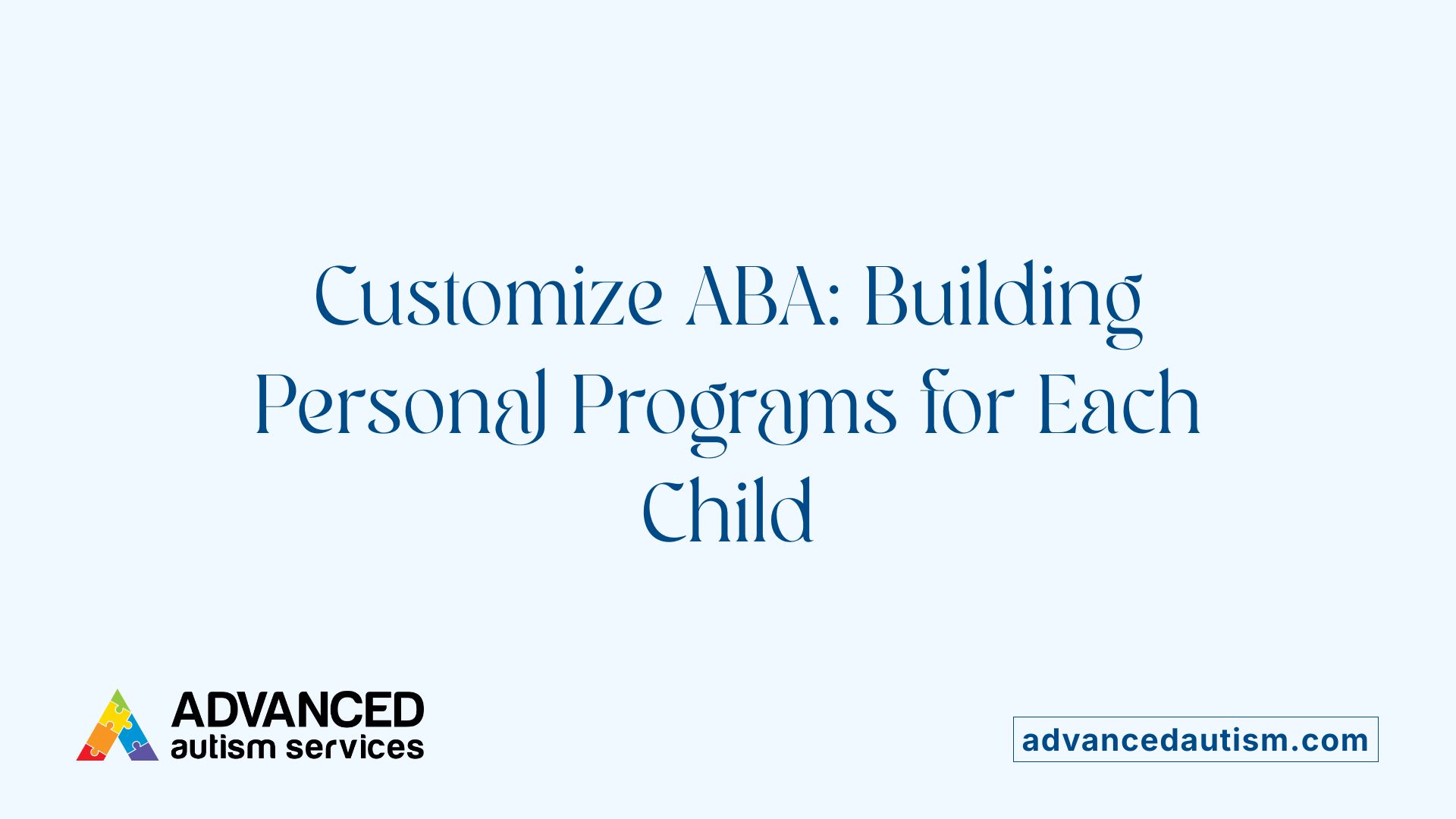
Why are initial detailed assessments important in ABA therapy?
Initial detailed assessments are vital for understanding an individual's current skills, preferences, and needs. This thorough evaluation lays the groundwork for creating a customized treatment plan that aligns closely with the person's specific challenges and strengths. Rather than adopting a one-size-fits-all approach, these assessments ensure therapy focuses on areas that will most benefit the individual.
What is the role of Board Certified Behavior Analysts (BCBAs) in ABA programs?
BCBAs are licensed professionals who oversee the design and implementation of ABA therapy programs. Their expertise guides the assessment process and the development of individualized goals. They supervise therapists, monitor progress, and make data-driven adjustments to ensure the program remains effective and responsive to the individual's changing needs.
How are individualized treatment goals created in ABA?
Based on comprehensive assessments, BCBAs collaborate with families and therapists to set realistic and meaningful goals. These goals target improvement in communication, social skills, self-care, play, and other vital developmental areas. The objectives are tailored to the individual's abilities, interests, and priorities, making therapy more engaging and relevant.
How is ABA therapy customized based on skills, interests, and preferences?
Therapy plans incorporate a person’s unique interests and strengths to boost motivation and participation. Breaking skills into small, manageable steps helps learners progress confidently. Tailoring activities to the individual's preferences promotes a positive and enjoyable learning environment, which enhances skill acquisition.
How does data collection influence ABA therapy decisions?
Data collection is a continuous process where therapists systematically record progress toward goals. This objective information allows BCBAs to evaluate the effectiveness of interventions, identify areas needing change, and fine-tune therapy methods as necessary. It ensures that treatment is evidence-based and responsive.
How are therapy adjustments made based on ongoing data?
Using data trends, BCBAs periodically review and modify treatment plans. Adjustments might involve introducing new strategies, altering reinforcement systems, or refocusing goals to address emerging needs. This dynamic process maximizes the potential for progress and skill generalization.
| Aspect | Description | Benefit |
|---|---|---|
| Initial Assessment | Detailed skill and preference evaluation | Establishes focused, relevant treatment foundation |
| BCBA Oversight | Licensed expert supervision and planning | Ensures professional, effective program management |
| Tailored Goals | Customized objectives based on individual profile | Promotes meaningful and achievable outcomes |
| Skill Breakdown | Dividing tasks into small steps | Builds confidence and measurable progress |
| Data Collection | Continuous tracking of performance | Enables evidence-based decisions and interventions |
| Ongoing Adjustments | Responsive modifications to therapy | Improves responsiveness and therapy effectiveness |
Core Goals of ABA Therapy for Child Development
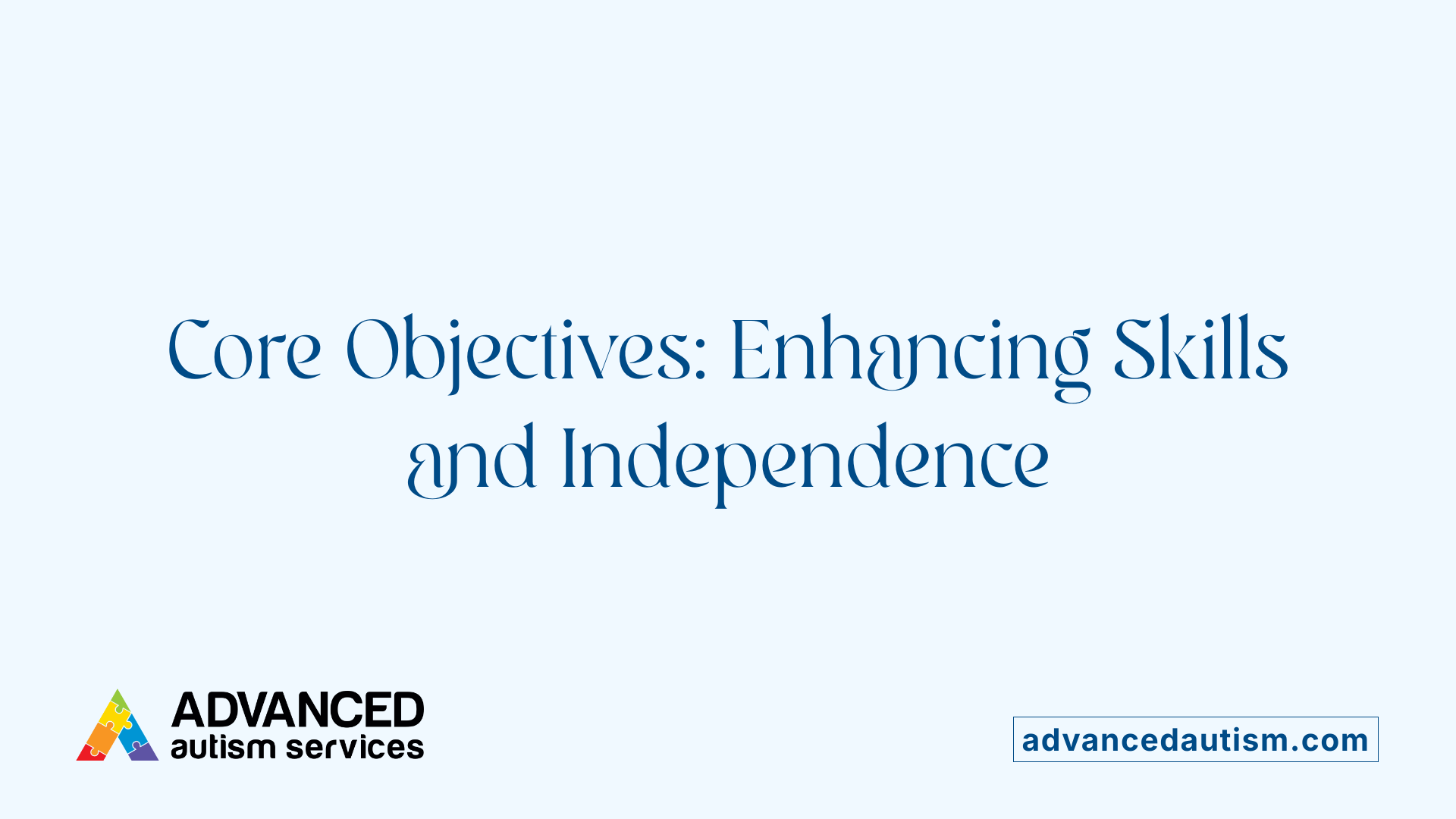
How Does ABA Therapy Improve Communication and Language Skills?
ABA therapy focuses heavily on enhancing communication abilities, targeting expressive and receptive language skills. With reinforcement-based strategies, children often show measurable gains in using words, gestures, or alternative communication methods, supporting better interaction with others.
In What Ways Does ABA Enhance Social Skills and Peer Interactions?
ABA programs teach important social behaviors such as turn-taking, sharing, and understanding social cues. Customized interventions help children build friendships and improve their participation in group settings.
How Does ABA Support Development of Self-Care and Daily Living Skills?
Through breaking tasks into manageable steps, ABA empowers children to master routines like dressing, eating, and hygiene. This fosters greater independence and overall quality of life.
Can ABA Advance Play, Leisure, and Motor Skills?
Yes, ABA incorporates play-based activities that develop motor coordination and leisure skills, encouraging creativity, engagement, and enjoyment in free time activities.
How Does ABA Assist with Academic Skills?
ABA targets learning skills such as attention, following instructions, and problem-solving, facilitating success in school environments and boosting cognitive growth.
What Role Does ABA Play in Reducing Harmful or Challenging Behaviors?
ABA identifies triggers and consequences of challenging behaviors, then uses positive reinforcement to decrease these behaviors while promoting desirable alternatives.
How Does ABA Build Independence and Participation?
By tailoring goals to a child’s strengths and interests, ABA increases autonomy and involvement in daily life, supporting inclusion and self-confidence.
Overall, ABA therapy is designed to customize interventions that not only teach essential skills but also enhance overall developmental progress and social integration for children with autism.
Evidence and Research: Efficacy of ABA Therapy
Meta-analyses and empirical studies supporting ABA
Multiple meta-analyses and empirical studies underline the effectiveness of Applied Behavior Analysis (ABA) in improving outcomes for children with autism spectrum disorder (ASD). These systematic reviews report moderate to high effectiveness of ABA interventions across cognitive, social, and communication domains. For example, effect sizes demonstrate strong positive impacts on intellectual abilities and language development.
Intensive therapy hours and duration for best outcomes
Research shows that intensive, long-term ABA programs—typically involving 25 to 40 hours per week over one to three years—yield the most significant developmental gains. Early intervention before age four is especially beneficial, often leading to better social integration and emotional regulation.
Improvements in intellectual functioning and language development
ABA programs have been found to substantially improve intellectual functioning with large effect sizes (g = 0.74). Language skills, both expressive (g = 0.74) and receptive (g = 0.60), also show considerable advancement through ABA therapy, enhancing communication abilities critical for daily life.
Social and adaptive behavior enhancements
Children participating in ABA interventions exhibit noticeable improvements in socialization (g = 0.44), adaptive behaviors overall (g = 0.42), and reduced separation anxiety. However, the impact on daily living skills is more modest (g = 0.14), suggesting room for additional focus in this area.
Specific study results on communication, IQ, and language
Studies report improvement rates ranging from 63% to 88% across various behavioral outcomes, including significant gains in IQ scores and communicative competence. ABA techniques like Early Intensive Behavioral Intervention (EIBI) and the Early Start Denver Model (ESDM) contribute to these results by tailoring instruction and reinforcement to individual needs.
Limitations and areas needing further research
Despite the positive findings, most research focuses on short-term behavioral improvements. There is a recognized need for larger, prospective, randomized controlled trials (RCTs) that compare ABA to other interventions and evaluate long-term impacts, including quality of life measures.
Use of validated measurement tools like Vineland Scales
Studies commonly utilize standardized instruments such as the Vineland Adaptive Behavior Scales and Bayley Scales of Infant Development to reliably measure progress and assess treatment effectiveness. These tools contribute to consistent assessment across diverse ABA studies.
Modern ABA Techniques and Methodologies
Overview of Common ABA Methodologies: DTT, PRT, ESDM
Modern Applied Behavior Analysis (ABA) therapy employs several distinct methodologies designed to support children with autism spectrum disorder (ASD). The most commonly used are Discrete Trial Training (DTT), Pivotal Response Treatment (PRT), and the Early Start Denver Model (ESDM).
Features of Discrete Trial Training and Its Evolution
Discrete Trial Training is a structured, one-on-one instructional approach that breaks down skills into small, manageable steps. Historically, DTT was highly rigid and sometimes involved the use of punishments, including aversive methods. However, modern ABA has shifted away from punishment-based techniques entirely. Today, DTT remains useful but is applied in a more flexible and positive manner.
Pivotal Response Treatment as Play-Based and Naturalistic
Pivotal Response Treatment offers a less structured, play-based alternative to DTT. PRT capitalizes on natural reinforcement by following the child's lead and encouraging learning through enjoyable interactions. This method emphasizes motivation and engagement, making lessons feel fun and relevant rather than forced.
Early Start Denver Model’s Integration of Play and ABA
The Early Start Denver Model combines traditional ABA techniques, including DTT, with play-based activities. It targets multiple developmental goals simultaneously such as communication, social skills, and motor skills. The ESDM approach focuses on harnessing natural interactions and early intervention to promote overall developmental progress.
Shift Away from Punishment-Based Methods
Modern ABA therapies no longer include punishment or aversive practices. The focus is on positive reinforcement and creating an encouraging learning environment. This evolution reflects a growing understanding of the importance of respect, empathy, and the emotional wellbeing of the child.
Focus on Fun, Natural Learning Environments
Contemporary ABA programs prioritize naturalistic, enjoyable learning experiences. Therapists incorporate a child's interests to promote motivation and maximize engagement. By building on strengths and encouraging choice, modern ABA aims to enhance skill acquisition in ways that feel rewarding rather than repetitive or demanding.
Early Intervention and Its Importance in ABA Therapy
Why Is Starting ABA Before Age 4 Beneficial?
Beginning Applied Behavior Analysis (ABA) therapy early, especially before the age of 4, can significantly boost a child's developmental journey. Research shows that initiating ABA at this young age leads to notable developmental gains, helping children with autism acquire essential skills sooner.
How Does Early ABA Affect the Need for Later Special Services?
Intensive early intervention with ABA not only promotes growth but can also reduce the likelihood of requiring extensive special services later in life. When foundational skills such as communication and social interaction are established early, children often achieve greater independence, lessening future support needs.
What Developmental and Social Benefits Are Seen With Early Therapy?
Early ABA helps improve a wide array of skills including communication, socialization, and adaptive behaviors. Children demonstrate enhanced emotional regulation, increased social integration, and better interaction abilities. These improvements foster better participation in everyday life and promote positive long-term outcomes.
How Does Early ABA Support Emotional Regulation and Integration?
Through individualized and reinforcement-based teaching, early ABA supports children in managing emotions and engaging with peers effectively. This therapeutic focus encourages smoother social integration, which plays a crucial role in a child's overall development and wellbeing.
What Role Does Intensive Early ABA Play?
Intensive ABA programs typically involve 20 or more hours weekly during early childhood. This consistent, structured practice maximizes learning opportunities and skill acquisition, laying a strong foundation for ongoing progress.
Overall, early intervention with ABA is vital for empowering children with autism to thrive socially, emotionally, and developmentally, by leveraging intensive therapy when it matters most.
Role of Parents and Caregivers in ABA Success
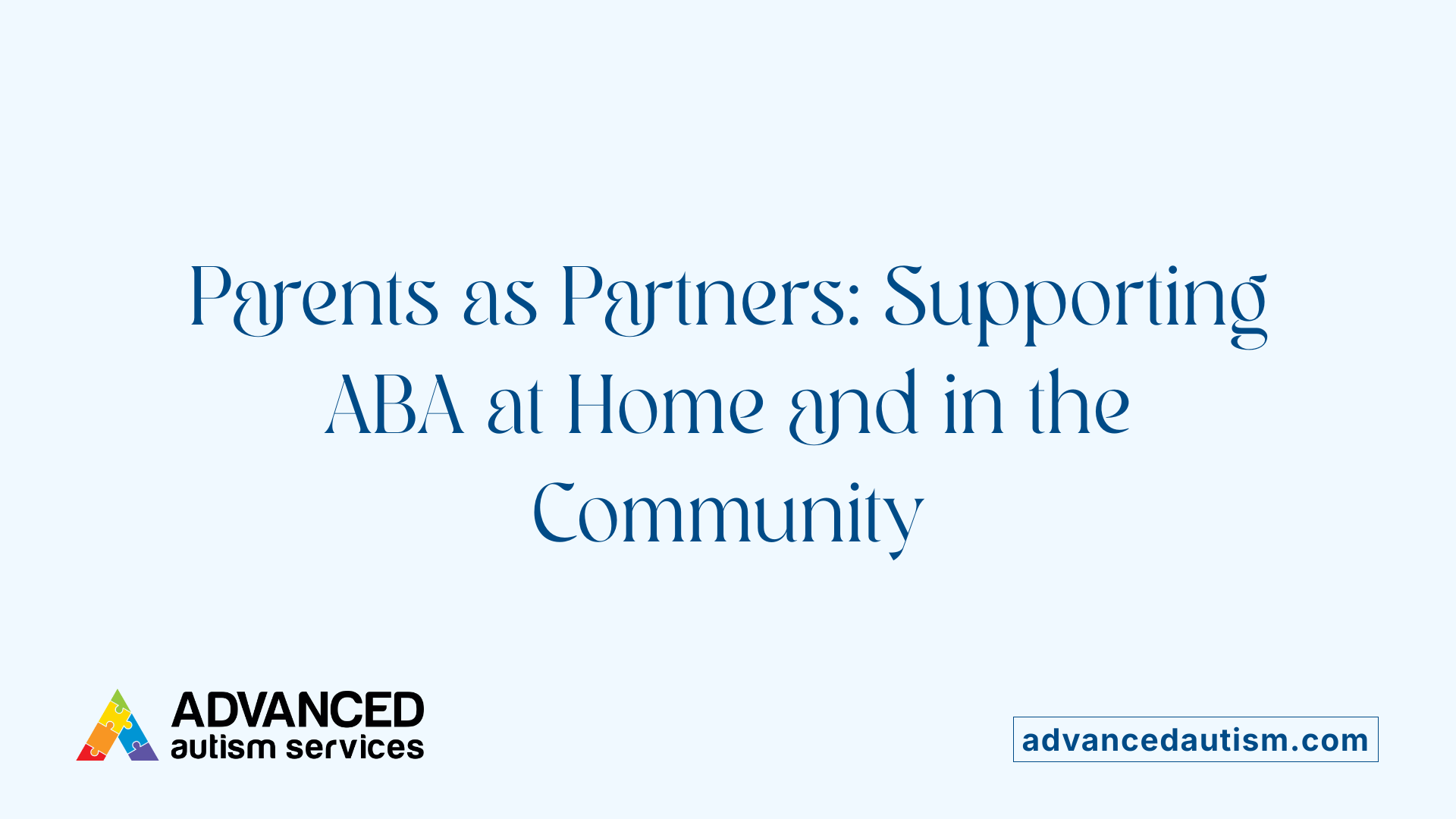
Why is parental involvement important in ABA therapy programs?
Parental involvement plays a crucial role in the success of ABA therapy. Parents and caregivers are often integral members of the treatment team, collaborating closely with Board Certified Behavior Analysts (BCBAs) and therapists. Their direct engagement helps to reinforce skills learned during therapy sessions and ensures consistency in behavioral approaches.
How do parents and caregivers collaborate to implement ABA strategies in daily life?
Parents are trained to apply behavioral strategies within natural routines such as mealtime, play, and social interactions at home and in the community. This collaborative approach allows children to practice new skills beyond the clinical setting and increases the real-life relevance of interventions. For example, caregivers may use positive reinforcement or prompt appropriate social behaviors during everyday activities.
How does parental involvement support generalization of skills?
Generalization refers to the transfer of skills learned in therapy to other environments. With active parental participation, children are more likely to apply new skills across multiple settings, such as home, school, and social outings. Parents help bridge these contexts, encouraging flexibility and adaptability that support lasting developmental gains.
How are children's strengths and interests supported through family involvement?
ABA programs emphasize tailoring interventions around a child's unique preferences and strengths. Parents provide valuable insight into their child's likes, motivating rewards, and preferred activities, enabling therapists to design engaging, meaningful learning experiences. This strengths-based approach increases the child's motivation and participation.
In what ways is joy and choice incorporated into ABA when parents are involved?
Modern ABA therapy promotes enhancing enjoyment and providing choices to children. Parents facilitate joyful learning by incorporating play-based and naturalistic strategies at home, ensuring interventions are positive and child-centered. This focus on happiness and self-determination helps children feel empowered and valued throughout their developmental journey.
By actively participating, parents and caregivers help make ABA therapy more effective, seamless, and sustaining, which ultimately supports better outcomes and quality of life for children with autism.
Regulation, Quality, and Provider Standards in ABA
What are the requirements for licensed BCBAs and trained therapists in ABA?
ABA therapy programs are delivered by qualified professionals, primarily licensed Board Certified Behavior Analysts (BCBAs) who design, oversee, and adjust individualized treatment plans. Trained therapists work under the BCBA's supervision to implement therapy sessions. This structure ensures that interventions are executed competently and ethically.
How is ongoing supervision and treatment evaluation conducted?
Continuous supervision by BCBAs is critical in ABA to monitor progress and make data-driven adjustments to treatment goals. Regular evaluations involve collecting and analyzing behavioral data, ensuring that therapy remains effective and tailored to the individual’s evolving needs.
What are Medicaid and private insurance coverage policies for ABA?
Many private health insurance plans and Medicaid programs are mandated to cover ABA therapy when it is deemed medically necessary. Coverage typically requires prior authorization by a healthcare provider. This broad coverage helps make ABA more accessible for families seeking evidence-based autism interventions.
What are the procedures regarding medical necessity and authorization?
Before ABA therapy begins, a qualified healthcare provider assesses medical necessity to authorize treatment. This ensures that the therapy is appropriate for the individual's condition. Documentation of progress and ongoing evaluations may also be required by payers to continue coverage.
How is quality and accountability maintained in ABA services?
Quality is maintained through the credentials of BCBAs, the ongoing training of therapists, and systematic evaluation of treatment outcomes. Clear documentation and ethical standards governed by professional boards promote accountability. These measures work together to uphold high standards and positive client outcomes in ABA therapy.
Addressing Criticisms and Evolving Perspectives in ABA
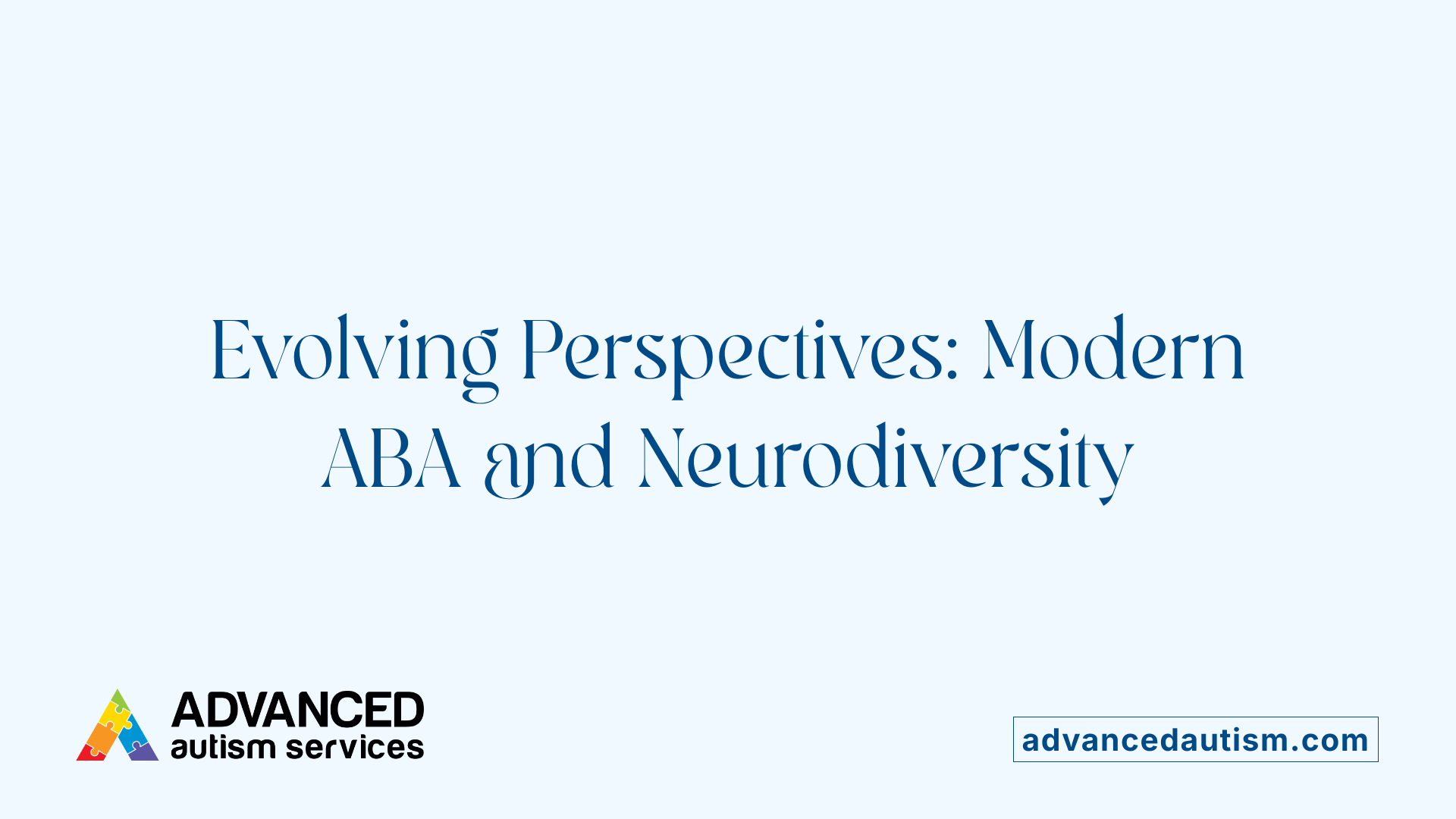
Historical use of aversive methods and discontinuation
Early Applied Behavior Analysis (ABA) interventions sometimes involved aversive methods, including punishments, to reduce undesired behaviors. However, these techniques have been discontinued in modern ABA practice due to ethical concerns and recognition of their negative impact.
Concerns about repetitiveness and emotional needs
Critics of ABA have noted that some programs can be repetitive and demanding, potentially neglecting the emotional and psychological needs of autistic individuals. This has raised questions about whether these approaches fully respect the child’s individuality and emotional well-being.
Debates within autistic communities about goals of ABA
Within autistic communities, there is ongoing debate about ABA’s aims. Some advocates argue that ABA attempts to make autistic children conform to neurotypical norms, which they regard as problematic. They emphasize the importance of acceptance and understanding rather than behavior normalization.
Modern focus on neurodiversity and strength-based approaches
Modern ABA has evolved to emphasize a strength-based, individualized approach. Therapists focus on each child’s interests and participation, aiming to maximize joy, autonomy, and skill-building on the child’s terms rather than enforcing conformity.
Balancing behavior improvement with respect for individuality
Today’s ABA seeks to balance improving helpful behaviors and reducing harmful ones while respecting neurodiversity and individuality. The goal is to support autistic children in participating more fully in society without compromising their unique identity or emotional needs.
Future Directions and Research Needs in ABA Therapy
Need for large-scale randomized controlled trials
Despite the well-documented benefits of ABA therapy, there is a notable scarcity of large-scale, prospective randomized controlled trials (RCTs) comparing ABA with other interventions. The current body of research mainly includes numerous small-scale single-case experimental designs (SCEDs), which limits the generalizability of findings. Expanding large-scale RCTs is crucial to rigorously assess the efficacy of ABA and establish stronger evidence for best practices.
Long-term outcome studies beyond short-term behavior change
Most ABA studies focus on short-term behavioral improvements. There is a significant gap in research investigating the long-term effects of ABA therapy on developmental outcomes and maintenance of learned skills. Future studies need to track children and youth who undergo ABA over extended periods to understand the sustainability of treatment gains and identify necessary adjustments over time.
Assessing quality of life impacts
While ABA therapy improves intellectual, communicative, and adaptive behaviors, its influence on overall quality of life remains underexplored. Evaluating how ABA affects emotional well-being, self-esteem, and life satisfaction will provide a more holistic view of its impact. Incorporating patient and family perspectives alongside clinical assessments will enrich understanding.
Comparisons with other therapeutic interventions
Current literature lacks comprehensive comparative studies between ABA and alternative therapeutic approaches. Future research should explore how ABA stacks up against emerging or complementary therapies, which could lead to integrated or customized treatment models optimized for individual needs.
Evolving practices reflecting new evidence and ethical standards
ABA practices continue to evolve in response to evidence and ethical considerations. Modern approaches favor naturalistic, play-based methods that emphasize child strengths and interests, moving away from rigid, punishment-driven techniques of the past. Ongoing research should monitor how these evolving modalities influence effectiveness and acceptability within the autism community.
By addressing these research needs, the field can enhance ABA therapy's evidence base, optimize interventions, and improve outcomes for individuals with autism spectrum disorder.
ABA Therapy’s Role in Empowering Children with Autism
Applied Behavior Analysis therapy remains a cornerstone in the developmental support of children with autism, providing scientifically validated strategies to enhance communication, social skills, and independence. Through individualized programs crafted by expert practitioners and grounded in robust evidence, ABA empowers children to build meaningful skills that enrich their lives and enable fuller participation in their communities. While the therapy has evolved to embrace naturalistic, strength-based approaches and continues to address valid critiques, its foundation in behavioral science ensures it remains a vital tool in autism support. Continued research and open dialogue will further refine ABA’s impact, securing its place as a transformative intervention for behavioral development in children on the autism spectrum.
References
- Applied Behavior Analysis (ABA)
- The effectiveness of applied behavior analysis program ...
- Applied Behavior Analysis (ABA)
- Applied Behavior Analysis in Children and Youth with ...
- The effectiveness of applied behavior analytic interventions ...
- The Controversy Around ABA
- Applied Behavior Analysis (ABA)
- Applied Behavior Analysis in Children and Youth with ...



